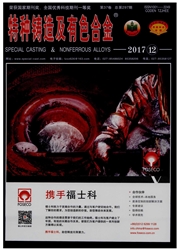

 中文摘要:
中文摘要:
TiAl-based alloys are potentially used as high-temperature structural materials with a high specific strength in the range of~900°C.However,the mechanical properties of TiAl-based alloys are extremely anisotropic with respect to the lamellar orientation of the microstructures.A balance combination of room-temperature ductility and strength can be achieved when the lamellar orientation are aligned parallel to the tensile stress direction.Lamellar orientation control of TiAl-based alloys by directional solidification technique has been widely studied in recent years.Two different directional solidification processes can be used to modify the lamellar orientation.One is a seeding technique and the other is adjusting the solidification path.This paper reviews the principles of the two methods and their progress.The influence of alloy composition and solidification parameters on lamellar orientation control is also discussed.
 英文摘要:
英文摘要:
TiAl-based alloys are potentially used as high-temperature structural materials with a high specific strength in the range of~900°C.However,the mechanical properties of TiAl-based alloys are extremely anisotropic with respect to the lamellar orientation of the microstructures.A balance combination of room-temperature ductility and strength can be achieved when the lamellar orientation are aligned parallel to the tensile stress direction.Lamellar orientation control of TiAl-based alloys by directional solidification technique has been widely studied in recent years.Two different directional solidification processes can be used to modify the lamellar orientation.One is a seeding technique and the other is adjusting the solidification path.This paper reviews the principles of the two methods and their progress.The influence of alloy composition and solidification parameters on lamellar orientation control is also discussed.
 同期刊论文项目
同期刊论文项目
 同项目期刊论文
同项目期刊论文
 期刊信息
期刊信息
